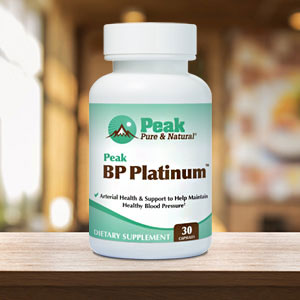Get Easy Health Digest™ in your inbox and don’t miss a thing when you subscribe today. Plus, get the free bonus report, Mother Nature’s Tips, Tricks and Remedies for Cholesterol, Blood Pressure & Blood Sugar as my way of saying welcome to the community!
15 minutes of yoga and your ‘stroke’ number could drop 10 points

Regular aerobic exercise — activities where you get the heart pumping — are crucial in the prevention of high blood pressure and heart disease.
Conversely, the ancient, calming practice of yoga is also a way to keep your heart healthy.
Typically people tend to choose one kind of exercise that works for them. I’m not knocking that because getting any exercise is a good thing.
But what happens if you combine two — specifically, aerobics and yoga?
For starters, you can take down the number strongly associated with your stroke risk…
Adding yoga to aerobics for maximum benefit
A group of Canadian cardiac care physicians set out to determine whether adding a bit of yoga to a regular exercise regimen could be more helpful in improving heart health than just stretching after a workout.
“The aim of this pilot study was to determine whether the addition of yoga to a regular exercise training regimen reduces cardiovascular risk,” explained lead investigator Dr. Paul Poirier of the Quebec Heart and Lung Institute at Laval University.
The investigators recruited 60 adults who were diagnosed with hypertension to participate in a three-month regimen of exercise.
Participants were divided into two groups. Both did 30 minutes of aerobic exercise five times weekly. But while one group did an additional 15 minutes of stretching, the other added on 15 minutes of structured yoga practice.
“We sought to apply a rigorous scientific approach to identify cardiovascular risk factors for which yoga is beneficial for at-risk patients and ways it could be applied in a healthcare setting such as a primary prevention program,” says Dr. Poirier.
To that end, participants’ blood pressure, as well as their glucose, lipid, and C-reactive protein levels were measured both before and after the three-month intervention period.
In addition, all were evaluated pre- and post-intervention using the Framingham and the Reynolds Risk Score scales (both are designed to evaluate future risk of having a heart attack, based on several factors).
Significant benefits with this exercise combo
After three months, participants in both groups showed a decrease in resting systolic and diastolic blood pressure, mean arterial blood pressure and heart rate.
But systolic blood pressure was reduced by 10 mmHg with yoga, and only by 4 mmHg with stretching. High systolic pressure is related to a greater risk of stroke and heart disease, so this is a big deal.
The yoga approach also reduced resting heart rate, as well as ten-year cardiovascular risk as assessed using Reynold’s Risk score.
“This study provides evidence for an additional non-pharmacologic therapy option for cardiovascular risk reduction and blood pressure control in patients with high blood pressure, in the setting of a primary prevention exercise program,” says Dr. Poirier..
“As observed in several studies, we recommend that patients try to find exercise and stress relief for the management of hypertension and cardiovascular disease in whatever form they find most appealing. Our study shows that structured yoga practices can be a healthier addition to aerobic exercise than simply muscle stretching.”
So if you already have a yoga practice, combining it with some aerobic exercise will further safeguard your heart.
But if you’re a yoga newbie, don’t count yourself out. This is your opportunity to design an exercise program for yourself that combines some aerobic exercise with some simple yoga moves. The web is a great source of free yoga videos. Be sure to look for ones geared to “beginners.”
If you haven’t been exercising at all, you’ll want to know it’s never too late. Research involving more than 30,000 patients with coronary heart disease indicates that becoming active later in life can be almost as good for survival as having exercised consistently for years.
If you have a family history of heart disease, this non-pharmaceutical protection could make all the difference.
Editor’s note: There are perfectly safe and natural ways to decrease your risk of blood clots including the 25-cent vitamin, the nutrient that acts as a natural blood thinner and the powerful herb that helps clear plaque. To discover these and other secrets of long-lived hearts, click here for Hushed Up Natural Heart Cures and Common Misconceptions of Popular Heart Treatments!
Sources:
Adding 15 minutes of yoga to exercise routine gives heart health an even more powerful boost — Study Finds
Adding yoga to regular exercise improves cardiovascular health and wellbeing — Elsevier
Impact of Yoga on Global Cardiovascular Risk as an Add-On to a Regular Exercise Regimen in Patients With Hypertension — Canadian Journal of Cardiology
Reynolds Risk Score for Cardiovascular Risk in Women — mdcalc.com













